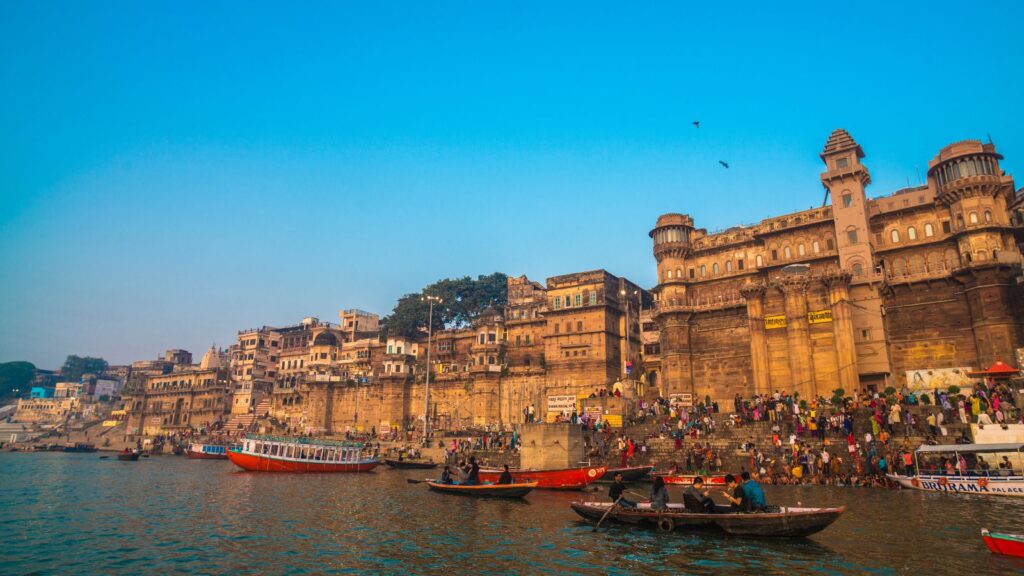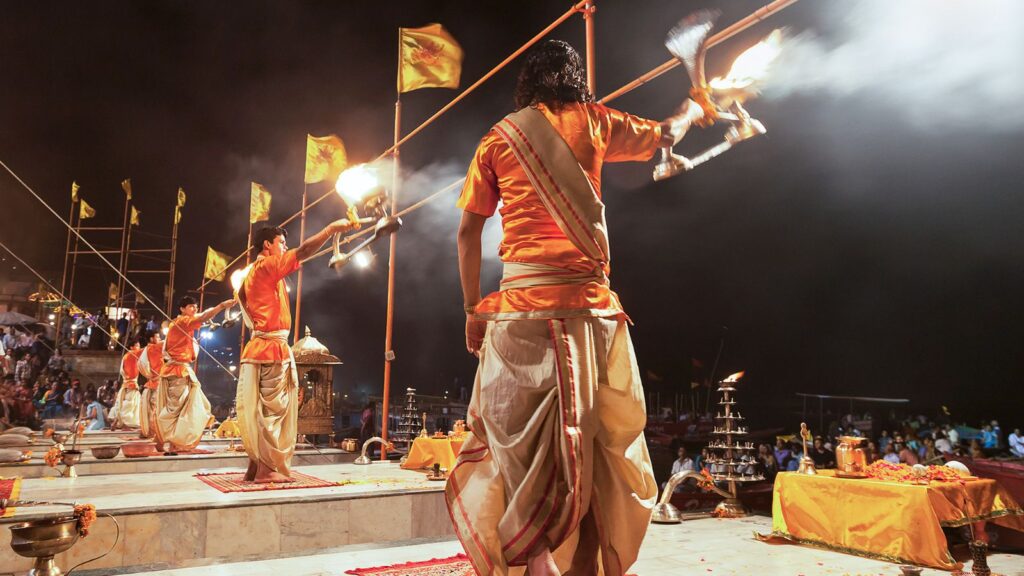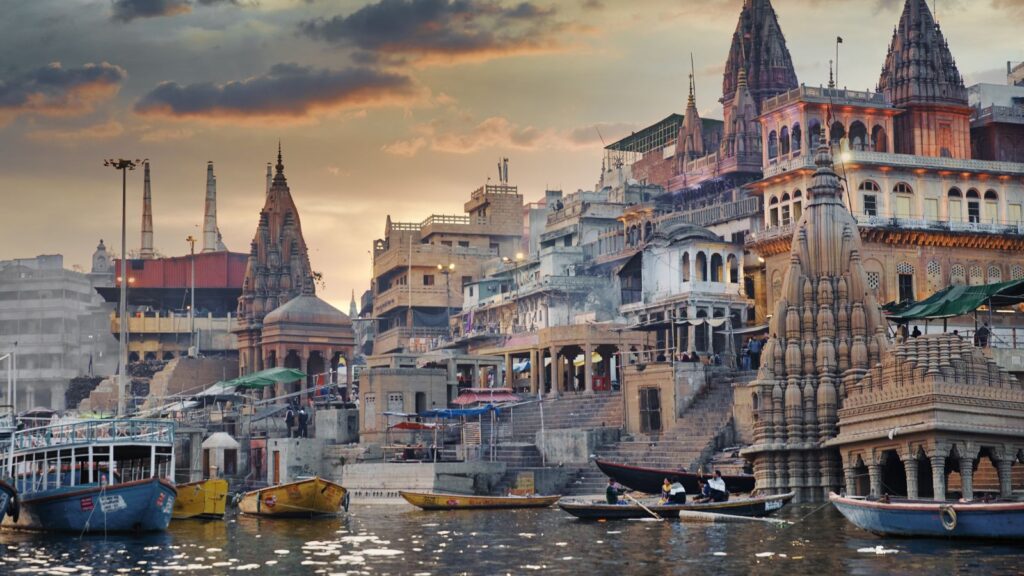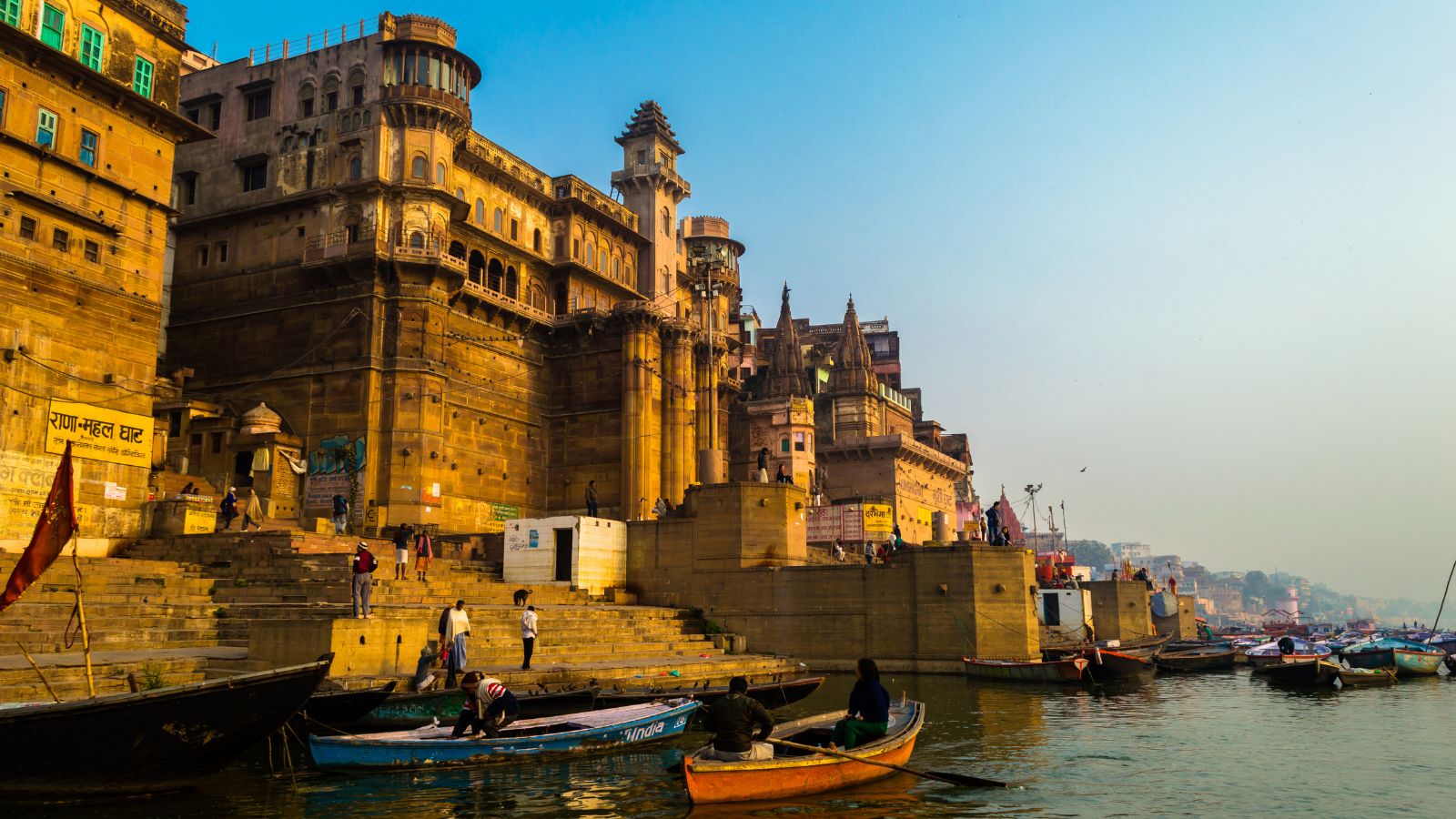Varanasi, often described as the world’s oldest living city, lies along the western bank of the Ganga with a riverfront marked by 84 ghats. These stone steps leading to the river not only serve as access points but are also sacred spaces where faith, mythology, history and daily life converge. Each ghat has a story of its own, with some tracing to Puranic lore and others to kings, saints, and colonial struggles.
The Role, Significance, and Naming of the Ghats
The ghats of Varanasi are central to the city’s religious, cultural, and social life. Each has a distinct function and a name that reflects its origin.
- Bathing ghats serve as sacred spaces where pilgrims take a dip in the Ganga, a ritual believed to purify the body and soul.
- Ceremonial ghats are gathering points for pujas, festivals and rituals such as the famous Ganga Aarti at Dashashwamedh.
- Cremation ghats such as Manikarnika and Harishchandra hold profound spiritual importance, as cremation here is believed to grant moksha, freedom from rebirth.
- Royal and palatial ghats were built by kings, nobles, and wealthy patrons. Many doubled as temples, dharmashalas (pilgrim shelters), and residences, leaving behind a legacy of architectural splendor.

The names of the ghats mirror this diversity of roles. Some derive from mythology (Manikarnika, Assi), others from legends and rulers (Harishchandra, Chet Singh). Several commemorate saints and poets (Tulsi), while others reflect the patronage of dynasties (Scindia, Darbhanga). This naming pattern reflects the interplay of myth, history, devotion, and royal patronage in shaping the city’s riverfront.
Here’s a look at some of the ghats, and how they got their names:
Dashashwamedh Ghat
Close to the Kashi Vishwanath Temple, Dashashwamedh is among the most important ghats. Its name comes from the legend that Lord Brahma performed the Dashashwamedha Yajna, the symbolic sacrifice of ten horses to welcome Lord Shiva to Kashi. Today, it is best known for the evening Ganga Aarti, which draws thousands daily.

Manikarnika Ghat
The most sacred cremation ground in Varanasi, Manikarnika is believed to release souls from rebirth. Its name, meaning “jeweled earring,” refers to the legend of Shiva’s ornament falling into the kund dug by Vishnu. Cremations occur here without pause, overseen by the Dom community, said to descend from Shiva’s attendants. The kund itself is considered older than the Ganga’s descent, symbolizing Kashi’s timelessness.

Harishchandra Ghat
Named after King Harishchandra, who lost his kingdom and worked here as a cremation servant after being tested by sage Vishwamitra. His truthfulness and duty later restored his honor. Cremations still take place here round the clock, making it one of Varanasi’s two busiest burning ghats.
Assi Ghat
At Varanasi’s southern edge, Assi Ghat marks the meeting of the Assi stream with the Ganga. Myth says Goddess Durga’s sword struck the ground here after slaying demons Shumbha and Nishumbha, creating the Assi river. Today, it is a lively center for pilgrims, students, and seekers, known for its open spaces and morning Ganga Aarti.
Panchganga Ghat
Named for the confluence of five rivers—Ganga, Yamuna, Saraswati, Dhutpapa, and Kirana—this ghat has long been an intellectual hub. Tulsidas is said to have composed parts of the Ramcharitmanas here, and it also has links to Sufi saints, reflecting the city’s layered spiritual history.
Tulsi Ghat
Once called Lolark Ghat, associated with fertility rituals, it was renamed after Tulsidas, who lived here and wrote the Ramcharitmanas. The ghat is still a site for fertility ceremonies at Lolark Kund and for staging the annual Ramlila, blending ritual practice with literary tradition.
Scindia Ghat
Built by the Scindias of Gwalior in the 19th century, it is known for its tilted Shiva temple, partly submerged in the Ganga. The temple is believed to have sunk under the weight of the ghat’s construction. Today, Scindia Ghat is quieter and considered auspicious for ancestor offerings.
Chet Singh Ghat
Marked by its fort-like structure, this ghat is tied to the 1781 battle between Raja Chet Singh and the British under Warren Hastings. Though Chet Singh was defeated, the ghat stands as a reminder of resistance during colonial times.
Other Ghats of Note
- Darbhanga Ghat: Built by the Darbhanga royal family of Bihar, remarkable for its palatial architecture.
- Kedar Ghat: A site popular with South Indian pilgrims, housing the Kedareshwar Shiva temple.
- Raj Ghat: At the city’s northern edge, historically marking ancient settlements.
Unlike ruins of antiquity, the ghats of Varanasi are alive with activity. From the sound of conches at dawn to the crackling of cremation fires even at late night, they symbolize the Hindu vision of life as a continuum. The ghats are part of a living tradition where mythology, history, and daily devotion coexist.



